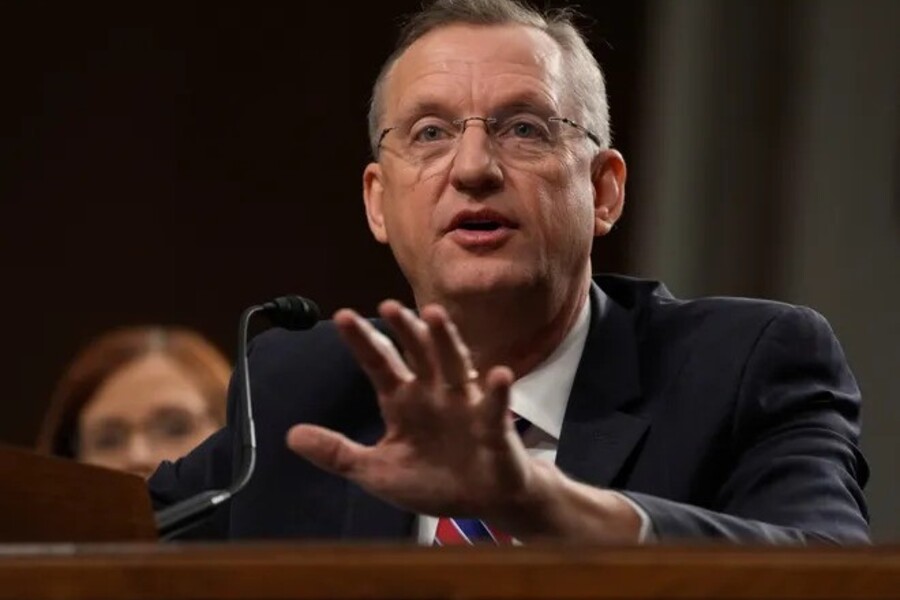President Donald Trump has extended the federal hiring freeze through October 15, continuing his administration’s drive to reduce the size and cost of the federal government. The extension, which comes after a series of earlier freezes since January, is aimed at locking in budget savings achieved through workforce reductions, early retirements, and the elimination of vacant roles. By targeting non-essential civilian positions, the administration says it is streamlining operations while still protecting critical functions tied to national security, public safety, and immigration enforcement.
The new order reinforces that no vacant civilian positions within federal agencies may be filled, and no new roles can be created, unless expressly exempted by law or approved through a designated exception. The directive also bars agencies from circumventing the freeze by hiring outside contractors to perform functions formerly carried out by federal employees.
The Office of Personnel Management (OPM) has been given the authority to issue case-by-case exemptions if it determines that filling a position is “otherwise necessary.” While this offers some flexibility for departments, the overall message from the Trump administration is one of tighter controls and fewer new hires in the coming months.
One of the agencies most affected by the ongoing workforce reductions is the Department of Veterans Affairs. As of early July, the VA reported it had reduced its headcount by 17,000 employees since January and plans to eliminate another 12,000 roles by the end of the current fiscal year on September 30. These reductions, officials say, are being carried out primarily through attrition rather than layoffs. The VA began 2025 with approximately 484,000 employees.
Veterans Affairs Secretary Doug Collins emphasized that the department is not pursuing a widespread reduction in workforce through involuntary separations. Instead, the agency is focusing on rethinking how services are delivered. “Our review has resulted in a host of new ideas for better serving Veterans that we will continue to pursue,” Collins said in a public statement, suggesting that modernization and efficiency, not cuts for their own sake, are the ultimate goals.
The hiring freeze includes clear exemptions for roles in the military, immigration enforcement, public safety, national security, and other critical services. It also exempts the Executive Office of the President and political appointees named directly by the president. These exceptions are intended to maintain operational readiness and fulfill statutory obligations that require a certain level of staffing.
In the broader context, Trump’s extension of the hiring freeze aligns with his campaign promises to “drain the swamp” and reduce what he often described as an overly bloated and inefficient federal bureaucracy. Supporters of the freeze argue that too much taxpayer money has been spent on a government workforce that, in some cases, duplicates services or fails to deliver strong performance.
However, not everyone is aligned with the administration’s approach. The freeze has sparked significant debate on Capitol Hill. Some lawmakers back the initiative, saying it forces agencies to rethink their structure and eliminate waste. Others have voiced concern that sustained hiring freezes could degrade the quality of essential government services, especially in departments like Health and Human Services, the IRS, and the Social Security Administration, where staff shortages can lead to backlogs, errors, and diminished public trust.
Federal labor unions have also pushed back, warning that employee morale is deteriorating and that remaining staff are being burdened with additional responsibilities without additional compensation or support. They argue that prolonged freezes can discourage talent from entering public service and result in an eventual “brain drain” as experienced employees retire and are not replaced.
Meanwhile, Congress continues to wrestle with the legality and implications of the freeze. Some federal functions are mandated by law and cannot be restructured or dissolved without congressional approval. Others, created through executive authority or administrative regulation, can be altered more freely by agency heads.
What remains clear is that the federal workforce is entering a period of transformation. Agencies must now focus on maintaining service levels with fewer personnel, creating more efficient processes, and evaluating where their core responsibilities lie. This, in turn, is driving internal audits, performance reviews, and renewed scrutiny of spending habits across departments.
For job seekers, the outlook remains bleak in the near term. With most civilian hiring paused or delayed, opportunities within the federal government are currently limited to exempt positions or rare exception-based approvals. Agencies have been instructed to carefully justify any personnel requests to the OPM and to exhaust all internal resources before seeking new hires.
The Trump administration maintains that these measures are temporary and necessary for broader fiscal reform. The question, however, is whether this freeze is a short-term tactic or part of a longer-term strategy to fundamentally alter the structure of federal employment. The upcoming months will be pivotal, especially as fiscal year-end deadlines approach and agencies finalize their budgets for 2026.
In the meantime, the Office of Personnel Management is expected to release additional guidance to help federal departments navigate the restrictions while maintaining continuity of operations. That guidance is likely to include clarification on exemptions, documentation standards for hiring requests, and procedures for reporting staffing adjustments.
Ultimately, the freeze serves as a litmus test for the administration’s belief that government can and should do more with less. Whether this belief translates into meaningful long-term reform or simply exacerbates service gaps remains to be seen. What’s certain is that the federal workforce landscape has changed significantly in a matter of months, and the consequences of that change will be felt well beyond October.


